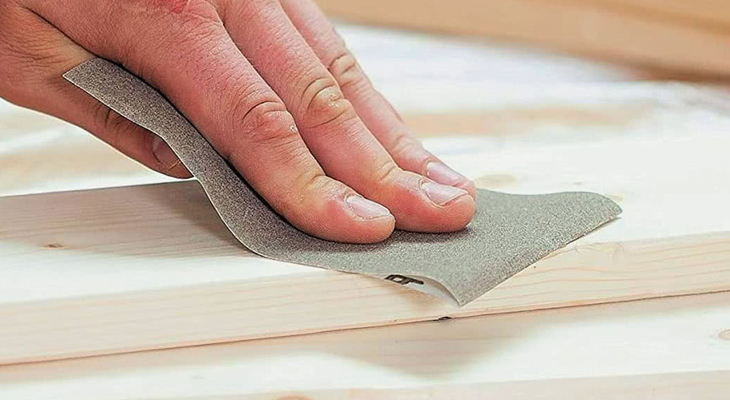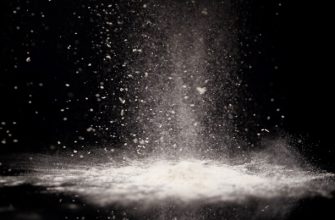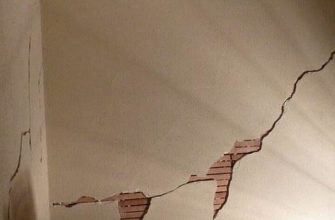In case you are engaged in a sanding activity such as the drywall sanding or auto bodywork it is quite possible that you are aware of how wet sanding operates. So, what is it precisely, and why would individuals use it? You have definitely come across wet sanding and asked whenever it is appropriate to wet sand and when it is appropriate to dry sand.
With this article, we will explain everything related to this type of sanding by answering all the frequently asked questions people have regarding and also how to accomplish it.
So, first and foremost can you wet sand with regular sandpaper?
The answer to this is a No.
With wet sanding, you are not advised to use regular sandpaper sheets as their rough grit develops when the surface, substance, or material is sanded. Also, combined with the grains, this typically results in far more scrapes or damage to the surface, substance, or material. You must use sandpaper designed particularly for this procedure.
Wet-dry sandpaper is created utilizing silicon carbide abrasives and can be used for either wet or dry sanding. In order to stay intact during the whole procedure as well as prevent loading, the backing is constructed of latex instead of paper or cloth.
- But, what is sanding and what is a sander?
- So, what is wet sanding then?
- Then, what’s the difference between wet and dry sanding?
- Why does one do sanding using wet sandpaper?
- What is the purpose of wet sanding?
- When Is It Really Appropriate to Wet Sand?
- Can you wet or dry sand with a wide range of materials?
- Is It Necessary to Wet Sand Drywall?
- Is it possible to wet sand primer?
- Do I have to wet the sand tiles or dry them?
- Is it possible to eliminate deep scratches with wet sanding?
- How to do wet sanding?
But, what is sanding and what is a sander?
Sanding is a technique of smoothing or polishing a surface, most commonly metal or wood.
A sander is a powerful tool that is used to polish surfaces via abrasion or rubbing with sandpaper. Sanding offers many surfaces a shiny sheen that makes them stand out, making it great for surfaces like guitars, cars,and 3D printing.
So, what is wet sanding then?
Wet sanding is the technique of sanding a substance with an abrasive and water, fluid, or liquid. To facilitate a seamless and shiny appearance, use water, fluid, or liquid to eliminate any grit fragments from within the sandpaper left over from dry sanding.
It’s used in the final phases of sanding, the first steps of polishing, scraping, and smoothing touch-up work, small surface repairs, and removing scratches from surfaces, such as painted surfaces.
Wet Sanding lets you eliminate marks, scars, or damages made by dry sandpaper without losing too much of the base surface or material. It could also be used to rectify any faults or irregularities caused by an inconsistent paint scheme, as well as to eliminate any dirt that has become caught in the paint finish.
Then, what’s the difference between wet and dry sanding?
Wet and dry sanding can aid in the smoothing of the surface of a material or an object, but in diverse ways. You don’t always want to mix dry and wet sand, although it’s a frequent practice for various operations. Despite the fact that many people mix these up, there are a few contrasts between the two, which make them distinct.
The noticeable difference is that the sandpaper is entirely dry when dry sanding. While using the wet technique, you will need water or some other fluid to lubricate the sandpaper, which is commonly a cleanser or detergent.
Dry sandpaper will become more abrasive, particularly at lower grits. This enables you to shape your work or wear down rough edges or surfaces significantly to smooth them up. Gradually, over time, wet sand paper is being used to drive out the gloss on the item or to prepare it for polishing and finishing.
The process of applying is yet another key comparison between the two. While dry sanding various surfaces, tiny round strokes are commonly used. You will use force to sand down the material to your preferences while doing so.
Wet sanding involves polishing with water as a lubricant and is ideal for wet-sanding the final finish of a task or operation. It is much less harsh and produces a much more flawless, smooth surface texture than dry sanding. Dry sanding, on the other hand, eliminates additional material and provides a smooth surface layer more rapidly than wet sanding.
Why does one do sanding using wet sandpaper?
Wet sanding is a method of sanding that involves the use of special sandpaper that is designed to be moist with water. The water works as a lubricant and aids in the removal of small fragments or materials, preventing the sandpaper from becoming blocked and causing deep marks or gouges. However, sanding does leave a few minor scuffs.
What is the purpose of wet sanding?
Wet sanding is done and employed to achieve a smooth and even finish. Dry sanding, on the other hand, is typically used to smooth out a surface, including wood, to leave edges less sharp or to make carpentry more intricate. Wet sanding, or the technique of wet sanding wood, is supposed to erase massive cuts and scrapes left behind by dry sanding. When wet sanding is performed appropriately, scratches that are left over will become fewer and far less noticeable. The final product will have a mirror-like gloss that will hide flaws.
When Is It Really Appropriate to Wet Sand?
When you need an exceptionally smooth finish or if sanding will be a major nuisance and you’re prepared to spend a lot of time sanding to prevent it, wet sanding is the way to do it.
Dry sanding is likely a great option if you have got a ton of stuff to eliminate.
Wet sanding at the end of this task sounds reasonable from a woodworking point of view, as it is only after you have decided to apply the finish that you would like to soften out whatever brushwork or dust shavings remain.
Wet sanding bare wood isn’t a good idea for a variety of reasons.
First of all, and probably most importantly, you wouldn’t want a really smooth, polished look just yet. Also, fine sawdust blocks wood holes, making staining extra challenging.
Secondly, the wood is sanded to eliminate any production faults, manufacturing signs, or scars. You will have to remove a significant amount of wood to accomplish that, and with wet sanding this would take ages.
However, with all that being said, wet sanding is fantastic for polishing off the last coating of wood finish!
Can you wet or dry sand with a wide range of materials?
The materials you’re dealing with will also influence whether you wet or dry sand. We’ve previously discussed wood, but there are a few other materials, substances, or surfaces that are commonly sanded.
Is It Necessary to Wet Sand Drywall?
Wet sanding drywall creates far less of a nuisance than dry sanding and results in a smoother, improved finish. Wet sanding drywall, on the other hand, takes much longer than dry sanding since drywall often occupies a huge area. You can definitely sand drywall with a dry sander if you wish. However, wet sanding is indeed more worthwhile if you are particularly concerned about the seamless polish of your walls.
Is it possible to wet sand primer?
The sort of primer you’re sanding determines whether or not you should wet sand it. You don’t really need to wet sand a latex, oil, water, or shellac-based paint primer because the paint coat would hide that flawlessly smooth surface anyhow. On the other hand, auto-body primers must be wet sanded.
Do I have to wet the sand tiles or dry them?
If you are painting masonry, ceramic, porcelain, or sand tile, you must certainly wet sand first because such materials need a smooth, polished surface.
Is it possible to eliminate deep scratches with wet sanding?
With most substances, surfaces, or materials, this is one of the ideal ways to eliminate deep scratches. While this method is excellent for eliminating severe scratches, it must be done with caution. It is generally wise to conduct experiments with a finer grit than you intend in order to avoid stripping the painting from the workpiece’s surface.
How to do wet sanding?
To Wet Sand, Follow These Steps:
Step 1: Choose the Right Sandpaper
Many individuals question whether wet sanding requires specific sandpaper.
Simultaneous wet and dry sanding could be done with wet-dry sandpaper. Alternatively, you can use wet sandpaper for wet sanding and dry sandpaper for dry sanding as well.
Wet sanding necessitates finer grit sandpaper than dry sanding. So, instead of starting with 80 grit, which is typically used for dry sanding, start with 400 grit for wet sanding.
Step 2: Combine the lubricant ingredients.
In a standard-sized bucket, combine water and a few drops of dish detergent.
The dish detergent makes the water a very little slicker, which renders it almost like a stronger sandpaper fluid.
Absolutely, mineral spirits can be used if you are working with wood.
Mineral spirits are expensive, whereas water is free.
Mineral spirits offer no benefit because your wood is fully completed, so you wouldn’t have to worry about water destroying it.
Step 3: Sand
Sanding is the third phase, where you can fold your sandpaper around a block of wood after dipping it in the water mixture. Polish or sand the wood in an ovular form, i.e., running with the grain on the longer sides of your oval.
Immerse the sandpaper in the water mixture solution again while it dries and sets. If some wet “sawdust”, specifically finish dust, has accumulated, wipe the item down with a cloth or rag to remove it.
You will have to manually sand this portion. Wet sanding with an orbital sander is not recommended as these are electrical instruments, and so beginning with them and getting them wet is certainly not a smart option. Also, since the goal is to get a lovely soft polished look, you will not need orbital sanders since they are too rough.
Step 4: Try it again.
Repeat the cycle or procedure with progressively higher grits of 800, 1500, and 2000. Do it till you approach sandpaper with only a grit of 2000.
Step 5: Buff
With the help of a gentle rag to rub the object down with furniture wax. Have fun with your smooth finish!









